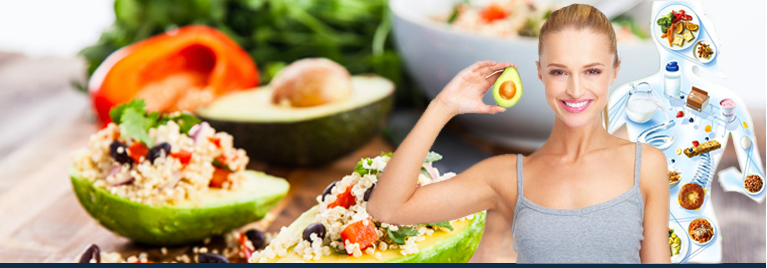
Pair Your Diet with THIS.
An uncommonly simple approach to
health, nutrition, and exercise.


INTRODUCTION:
It basically comes down to this -- either:
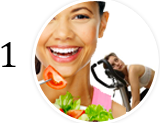
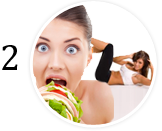
You eat well all the time, and you can be a lot more sloppy with your exercise program.
You tend to cheat a bit and eat foods that are less than perfect, so you can make up for it with exercises that use the calories in the best way possible.
Today, we’re going to be talking about #2.
The food you consume is incredibly important, and we absolutely advise you eat well. This means, in the simplest terms:

- Eat naturally, whenever possible. (organic vs non-organic)
- Meats should be organic/grass fed, to avoid harmful chemicals in your food.
- Avoid wheat, soy, excessive corn or grain consumption, and trans fats.
- Generally speaking, the healthiest diets tend to have a common denominator of decreasing inflammation in the body; this is perhaps the best focal point.
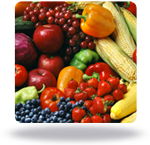
When you follow the food advice written above, you can choose any fitness goal and make serious progress. If you want to build muscle, increase healthy carb (i.e. veggies) consumption and time it just before and after exercise; if you want to lose fat, think about macronutrient sequencing first, eating proteins, then carbs, then fats.
Whenever you venture away from what’s written above, understand you should adjust your exercise program. Let’s say, for example, that you end up eating a burger today, which has plenty of carbs that are less than healthy for you (i.e. gluten-based carbs.) Now, a lot of people feel their diet is ‘ruined’ for the day and there’s nothing they can do. In fact, there are a couple of options:
- One set of squats (10-50, depending on pace and skill level) before the meal, one after. (or equivalent exercise like deadlift, swing, or other compound exercise)
- Super-hydrate (2-3 consecutive glasses of water after dinner) to ease digestion, then a heavy 2-3 sets of kettlebell swings (or equivalent) before going to bed.
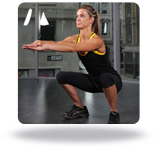
In the first option, I’m choosing to bias the calories towards use for my muscles through a substance called ‘muscle glycogen.’ This is done by pumping up my muscles before eating a bunch of carbs, biasing the calories towards those muscles, and then following up after a meal to ensure they go there. This is a great example of how to get in a bit of quick exercise, feel great, and still have an awesome day with friends. I personally take advantage of this option all the time.
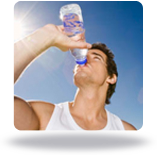
As for option #2 -- super-hydration -- this is another great way of adding balance to your life when out and about, but also wanting to stay healthy. One great trick I use after a big meal out is drinking down 2-3 big glasses of water (16 ounces or more) before I leave the restaurant. After eating a big meal, digestion comes to a screeching halt; hydration increases your metabolism, on a cellular level, and makes the food easier to digest. Then, later, when you’re feeling better, it’s time to build a bit of muscle from those extra calories, before they get laid down as fat. A quick 5-minute muscle set will make all the difference.
Regardless of which option you choose, a bit of extra fiber intake the following day -- paired with plenty of water -- will help you excrete the toxins or gook you may have built up in your digestive tract. As you’re about to see, there’s a way to ‘react’ to eating and get lean.
This report is about the synergy between exercise and nutrition. While I will give you two specific example workouts, the intention of this report is to teach you how to properly modify a workout based upon your food choices for that day. When you learn how to do this, you become empowered, and nothing will stand in the way of your results.
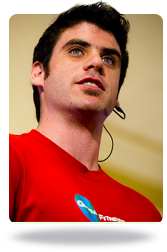
In the event that we’re meeting now for the first time, please allow me to introduce myself. My name is Dr. Kareem Samhouri, and I’m passionate about helping you. Many people refer to me as Dr. K or Dr. Kareem, or just plain Kareem... whichever suits you best.
I’m a Doctor of Physical Therapy, Kinesiologist, Certified Strength & Conditioning Specialist(CSCS), and certified Health and Fitness Specialist. I specialize in helping people find their #1 health priority and solving that first; with the assumption that your highest priority health concern has a “Domino effect” on other systems, as well as your weight.
...back to the report...
The best way to use this report is by reading through it once and then referencing specific exercise recommendations based upon your food choices for a certain day, and as needed. This will help you build an appropriate workout and maximize your results.
Please make sure to thoroughly read through Pair Your Diet with THIS ™ and then teach this method to at least one person. You will be spreading great knowledge, and you will also be processing the material in a way that wouldn’t have been possible any other way.
You are free to distribute Pair Your Diet with THIS ™ to anyone you believe this information will help. Please send them here:
Chapter 1 Food = Fuel
Food = Fuel; Exercise = Fire.
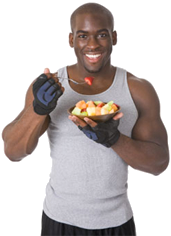
If you think about it, the food you consume is the energy you need to live, move, breathe, think, etc. Without food, we don’t have enough strength to survive, let alone move. Depending upon what we eat, we have varying levels of energy.
Every bit of food you place into your mouth is converted to some form of energy. Weight loss happens when you consume less calories from food than you burn off during the day.
Every calorie turns to energy; not all calories were created equally.
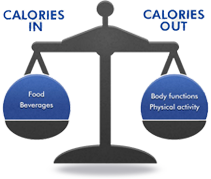
Calories derived from protein, for example, have the ability to burn 20% of their own caloric volume, through digestion. Therefore, you get 20% greater caloric allowance when eating protein.
Proteins are a special macronutrient category. In fact, your body will start to build muscle more easily -- which will increase your metabolism -- if you start eating more protein as you increase the intensity of exercise.
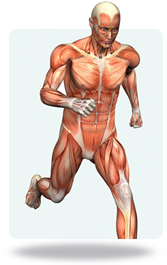
Your body will do amazing things, depending on the clues you give it.
For example, if you clue your body into thinking it’s winter time by binging now and restricting later, you are suggesting that food will be scarce and your body will do an amazing job of storing fat. In fact, you’ll even notice a lower belly bulge, which indicates that your body is stressed, producing excessive amounts of cortisol, and storing fat close to your lower intestines for faster digestion in the case of famine.
Fascinating, isn’t it?
On the other hand, you can keep your hormones in balance, clue your body into thinking that it is safe with plenty of food, warm weather, and sunlight, and it will begin dropping fat and helping you get lean.
It gets a whole lot neater when you begin to realize that you can pair proper exercise and food habits together. This is realistically producing the ‘perfect clue’ for your body. Ancestrally speaking, you may have done quite a bit of anaerobic work following a hunt, after you caught your prey. In this situation, you might imagine dragging your dinner for a mile or so, which would involve heavy lifting and three dimensional movement before having your dinner.
Historically, feast (or cheat) days were paired with high intensity anaerobic work with short bursts. Naturally, this work was done before the feast, in preparation. I’d advise you pair exercise the same way, which we’ll talk more about in a few minutes...
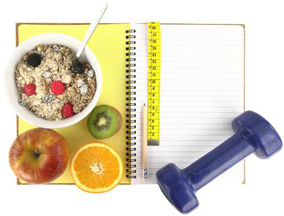
For now, I’d like you to consider the concept of ‘clueing your body in.’ Your body is a series of feedback loops; that’s how it communicates with itself to know how far to reach, grab, or move.
You are constantly sending information and returning feedback in your body. Any relevant clue affects movement. Why wouldn’t we able to do the same thing to our metabolisms?
Prepare your body for fat loss by eating foods that make sense on a schedule that makes sense. You will see an example in Chapter THREE of a Food // Exercise Pairing Guide you can use to simplify.
Chapter 2 Exercise = Fire

Exercise is how you burn any calorie you consume that exceeds your Basal Metabolic Rate(BMR). Your BMR is the amount of calories you burn doing what’s called ADL’s, or activities of daily living. It’s important to understand what counts as exercise and what ‘doesn’t count.’ For example, it does NOT count to walk from your car to a store, walk around your house, or perform average work duties in an office. None of this has a dramatic effect on your calories burned for the day.
However, the American College of Sports Medicine (ACSM), does recognize the cumulative effect of exercise is worth 90-95% the benefit of doing exercise all in one bout. For example, if you increase your intensity and do 2 minutes of exercise 5 times throughout the day, you can actually reap 90-95% of the benefit of doing all 10 minutes at once.

This suggests that even small bouts of exercise, from 2-5 minutes, may be the best thing that could ever happen to you. You’ll be able to lose weight, improve your cardiovascular fitness level, and increase strength with as little as a few minutes of exercise per effort. Not a bad deal, huh?
There are three main energy systems in your body when it comes to exercise:
- ATP - PC (adenosine tri-phosphate, phospocarbonate) - 0 to 2 second energy - burst energy.
- Anaerobic - 2-60 second energy that is triggered by intense, heavy exercise, followed by prolonged rest periods. Sprint work is also considered anaerobic.
- Aerobic - 60 seconds & beyond. Your body requires the use of oxygen for energy after 60 seconds, so this is helpful for producing fitness that corresponds to doing activities for prolonged periods.
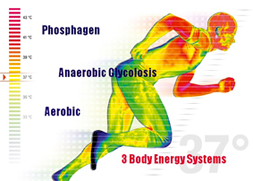
Recently, I’ve adjusted my exercise philosophy to cater to shorter workouts -- workouts that hit all three energy systems and three different directions of movement -- that are designed to help me get lean in the least amount of time possible. As a totally separate statement, I’m very active with low to moderate level cardiovascular activity for prolonged periods of time, but that’s out of a desire to be active, get outdoors, and play.
I like to work out for 5-15 minutest at a time, every other day; I choose my workouts based upon how I ate or will eat that day.
Here’s the way I look at working out to get lean:
Getting lean should cause the least amount of damage to your body possible, meaning the least amount of exercise necessary. Once lean, increase demand by working out for longer if you want to.
Workout Goals/Options:
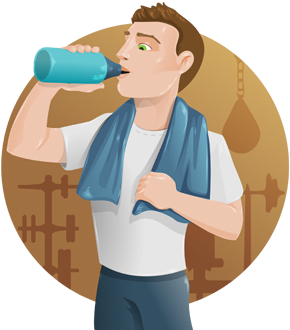
The way I see it, there are ten main goals for working out:
- Fat Loss
- Flat Stomach
- Anti-Aging
- Posture
- Super Lean
- Build Muscle
- Increase Power
- Improve Athleticism
- General Health
- Pain Relief/Rehabilitation
Generally speaking, you’ll want to adjust the types of exercises you choose, the length of your workouts, the duration of each work to rest interval, and exercise variety, regardless of which goal you choose. This provides an excellent cross-training effect and prevents plateau.
Workout Format:
There are a bunch of ways to sequence exercises, and many are effective. That said, when it comes to ease-of-understanding -- along with setting exercises up in such a way to automatically align your body -- the following five exercises, in this specific order, are best:

I recommend you do 5-minute sets/workouts, depending upon how many goals you want to stack on top of one another in a single day. Generally speaking, one 5 minute set, every other day, will produce a substantial result:
| Work to Rest Intervals: | Goals: |
|---|---|
| 10/50 | Flat Stomach, Anti-Aging, Super Lean, Build Muscle, Increase Power, Improve Athleticism, General Health |
| 20/40 | Fat Loss, Flat Stomach, Build Muscle, Increase Power,Improve Athleticism |
| 30/30 | Anti-Aging, Super Lean, Build Muscle, Improve Athleticism, General Health, Pain Relief/Rehabilitation |
| 40/20 | Super Lean, Improve Athleticism, General Health, Pain Relief/Rehabilitation |
| 50/10 | Anti-Aging, Flat Stomach, Super Lean, Fat Loss, Posture, Build Muscle, Improve Athleticism, General Health, Pain Relief/Rehabilitation |
Let’s say you want to work on both ‘Fat Loss’ and ‘Posture,’ you might consider the following:
Minutes 6-10: 5 Minute Fat Loss workout (choosing from: 20/40 and 50/10 work:rest intervals)
The key is to get the ‘most from every set possible,’ meaning that you hit momentary muscular failure (MMF) by the end of the work interval, every single time.
Chapter 3 Food // Exercise Pairing Guide
Now, let’s get fancy for a moment and think about how our ancestors would have paired exercise and food, as hunters and gatherers...
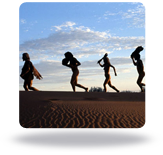
We may have foraged for food for 2-3 days at a time, feasting on nuts, berries, and meat that we carried with us from our last score. It’s unlikely that we had the time or expendable energy to eat many vegetables with meals along the way, chewing endlessly and increasing preparation time for our meals. Rice and corn were not around... We ate on the land, and we conserved our food until our next catch.
Basically, we ate what was around, and we searched for more food. We had days where the available food was:
- Very little to no food.
- Nuts, berries, meat.
- Nuts, berries, fruit, vegetables, meat.
- Just meat.
- Everything.
Naturally, when there was less food, we searched everywhere until we could find more food. When food was plentiful, we rested after meals and relaxed.
Our bodies were made to be super-performers in our natural environment. This is about survival, and we’re in the process of killing ourselves as a society.
We have a rising epidemic of obesity, with a shocking statistic of 1 out of every 2 babies developing Diabetes within the next 7-8 years if we don’t do anything about this.
It’s time that we get SMART - very smart.
Strategically choose your exercise program based upon the food you eat and watch your body get‘ clued in’ to lose fat more rapidly.
Strategic Pairing Of Food & Exercise:
Going back to our earlier discussion of the different types of nutrients our ancestors may have foraged on a day to day basis, we had days where the available food was:
- Very little to no food.
- Nuts, berries, meat.
- Nuts, berries, fruit, vegetables, meat.
- Just meat.
- Everything.
In modern day dieting, this is equivalent to:
- Fasting Day
- Low carb/High Protein Day
- Moderate Carb Day/Moderate-High Protein
- Protein Only Day
- Feast/Cheat Day
It’s a logical progression of how a diet may vary throughout the week, and this type of progression tends to produce an outstanding fat loss result. Sometimes, people find it easier to have one ‘Diet Rule’ per day, so this makes for an excellent rotation of eating habits.
Personally, I prefer to understand which type of workout I should do, based off of how I decided to eat today. I generally eat well, and I make it a point to consume foods that will help me live along and healthy life, but sometimes I get tempted and crack when it’s not a Cheat Day. Depending upon what I ate and when, I’ll want to vary my workout. This is how I prevent a ‘two-for-one mistake’ and end up hitting my lean body goals more quickly:

| Mistake #1: | Not eating according to plan. |
| Mistake #2: | Reacting incorrectly, causing exercise and diet to magnify the consequence of Mistake #1. |
As the take-home lesson, it’s a good idea to know how you’d tweak your diet to hit each of these goals, so you know which goal to work on when your diet accidentally ends up in that direction:
| Workout Goal: | Nutritional Adjustment: |
|---|---|
| Fat Loss | Low carb, high protein, high fat |
| Flat Stomach | Low carb, high protein, hormonal balancing through food |
| Anti-Aging | Paleo (or similar) |
| Posture | Anti-in?ammatory diet (only priority here) |
| Super Lean | Paleo (or similar) |
| Build Muscle | High carb, high protein, high fat (increase calories) |
| Increase Power | Carb timing pre-workout, high protein, high fat |
| Improve Athleticism | Carb timing post-workout, high protein, high fat |
| General Health | Paleo (or similar) |
| Pain Relief/Rehabilitation | Anti-in?ammatory diet (only priority here) |
So, if you have a particular exercise goal, consider adjusting your diet accordingly; likewise, if you eat a certain way (from the right side of the table above,) consider making that your exercise goal of the day and adjusting your reps, sets, rest periods, etc. to cater to how you ate.
The Next Step...
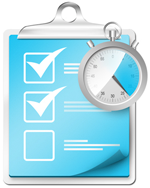
Start planning.
What did you eat today? Was it more of a low carb/high protein day? If so, is there still time to adjust your work to rest intervals and make use of the food you ate?
The time to take action is now. The time to react to mistakes is now. The time to decide on results that last a lifetime and get easier is also now.
Follow a simple set of rules. Improve your physique, and master the relationship between food and exercise.
When creating the body of your dreams, be sure to take enough time to strategize and use simple communication strategies to tell your body what you need from it. The amazing thing is... your body is always listening, and it will always be able to help you so long as you speak its language.
Believe in yourself. Conquer one thing, no matter how small, every single day.
Own your feelings, whether in the moment or not. Assess your reactions to things - you’re human, but are you being the best person you can be?

Set goals. Remember each day is an opportunity to hit at least one small goal, each week is an opportunity to hit one medium sized goal, and each month is an opportunity to hit one big goal. Inside of a year, your world could be a very different place.
Decide. From now on, your results depend upon your decision. Your reality is the way you choose it to be. Your workouts will be so much more effective in helping you achieve your optimal health and body, because you designed them to be that way based upon your goals and what you ate on that particular day.
The time is now. Your first action starts today, no matter what. Get started.
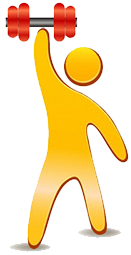
To Your Dreams Becoming Reality,

